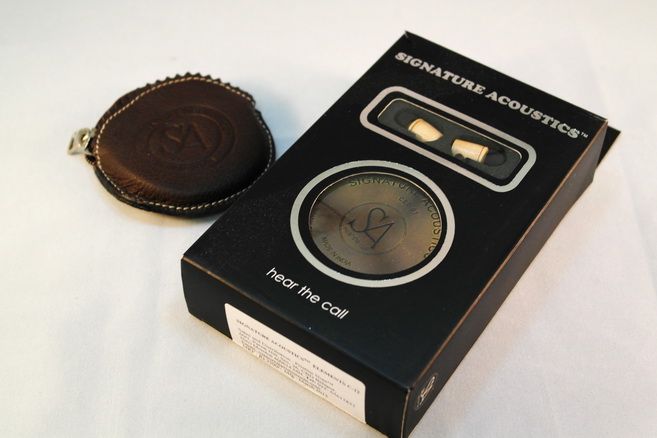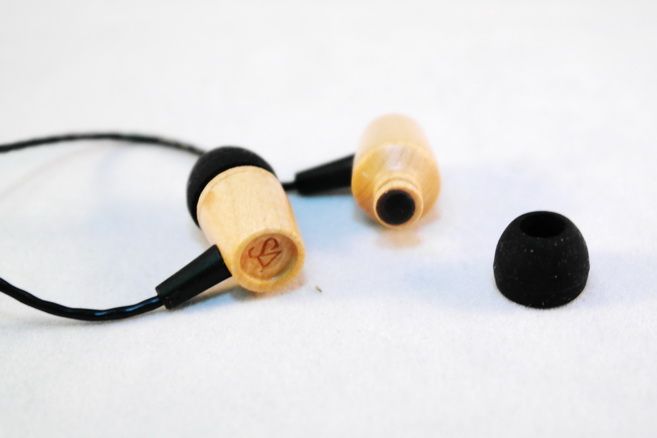
Spec
Driver: 8 mm (CCAW) Dynamic
Impedance: 18 Ohms @ 1Khz
Frequency: 17 Hz to 20 Khz
Sensitivity: 102 dB
Cable length: 1.2m (split length 28 cms)
Channel Imbalance: Less than 2.5% dB @ 1 Khz

Packaging, Accessories and Build Quality
The C-12 comes on a fairly innocent looking black paper box - nothing too fancy or eye catching at first look. Inside, you will find the IEM, 4 pairs of eartips (S, 2xM, L), a shirt clip, two set of filters, either leather or brass case, depends of what package you are paying. The leather case, which looks and smells like real leather (and probably is), will come standard with C-12. The brass case package will cost a few dollars more. Practicality wise, the leather case is probably the better choice. But the brass case does look very impressive in person and probably great as a jewelry case. Considered that the IEM itself has a fairly inexpensive price tag, both cases are rather outstanding addition that elevates the whole package. The extra filters are also another great addon. One set is the same as those installed on the nozzle, while the other is a denser variance (with higher acoustic impedance) to tune for a slightly different sound.
Build quality is above average. The whole wooden housing doesn’t look quite as good a finish as Crossroads’ Woody or ThinkSound’s models and probably be better with a darker lacquer, but it is still solid. The cable looks and feels quite durable with a similar twisted wires finishing like the early Branwavz M2, but with some minor memory effect. All and all, it isn’t the best I have seen in the price range but far from the worst either.

Sound Quality
The IEM has been given 50 hours of burn-in before the review.
C-12 sounds warm and smooth, with emphasis on lush and richness. Bass reaches down deep, but rolls off in lower sub-bass so it doesn’t quite have the deep rumbling sensation. It is however quite abundance in quantity from mid to upper bass, not particularly boomy though definitely presents at most time, and can almost be classified as bass dominance. Lower mid is lush and rich, which are the signature sound of wood housing. However, the upper mid to treble are a bit too polite, lacking sweetness, crispiness and sparkle to highlight the micro-detail and air, and in turn makes vocal, especially female, sounds smooth, if not a bit dull. It is however still slightly ahead of that of Brainwavz M2 or M3 in drawing out detail. With a few dB of treble boost however, C-12 can really shines. Despite restricted air, soundstage is still very good, and better on width than depth. It is probably benefited from the wood housing which from my own experience, always delivers a more specious, nicely resonated sound than metal. All and all, the C-12 compares well to the similarly priced (and also bass heavy) beyerdynamic XP1 as well as early Brainwavz models, which is not too shabby for any company’s first IEM. The lushness of the C-12 will most appeal to those who are looking for easy going and fatigue-free sound, especially if you don’t mind a bit of bass in the mix.

Verdict
Despite being in India, a country that is not known for having audiophile’s headphone company, Signature Acoustics is passing with flying colors with their firstborn, the Element C-12. While it isn’t the be-all-end-all by any long shot, it is a statement to show that the company does know what it is doing and able to produce an IEM that can stand shoulder to shoulder with the competition – and that’s something they can be proud of.
A thank to Signature Acoustics for the sample.





